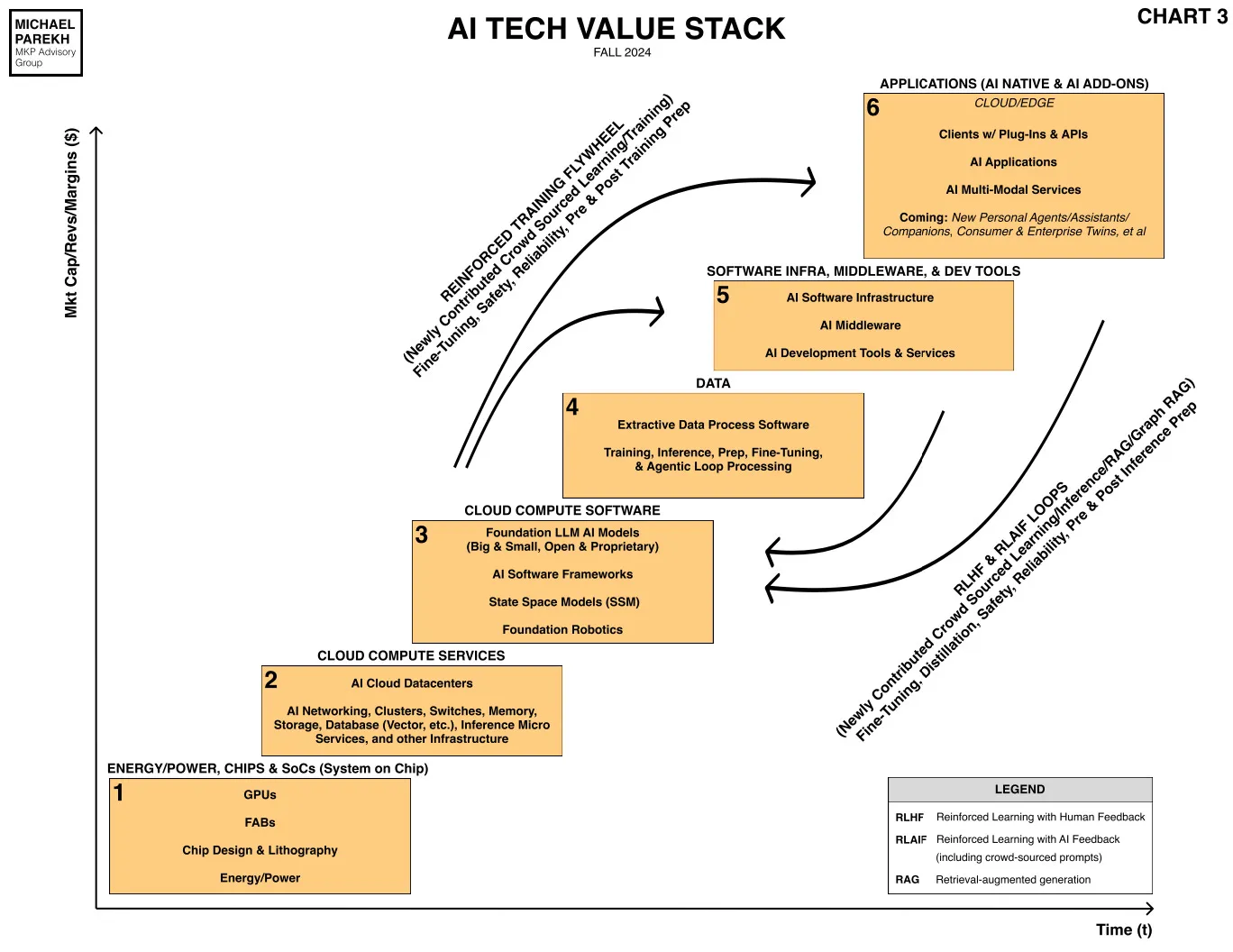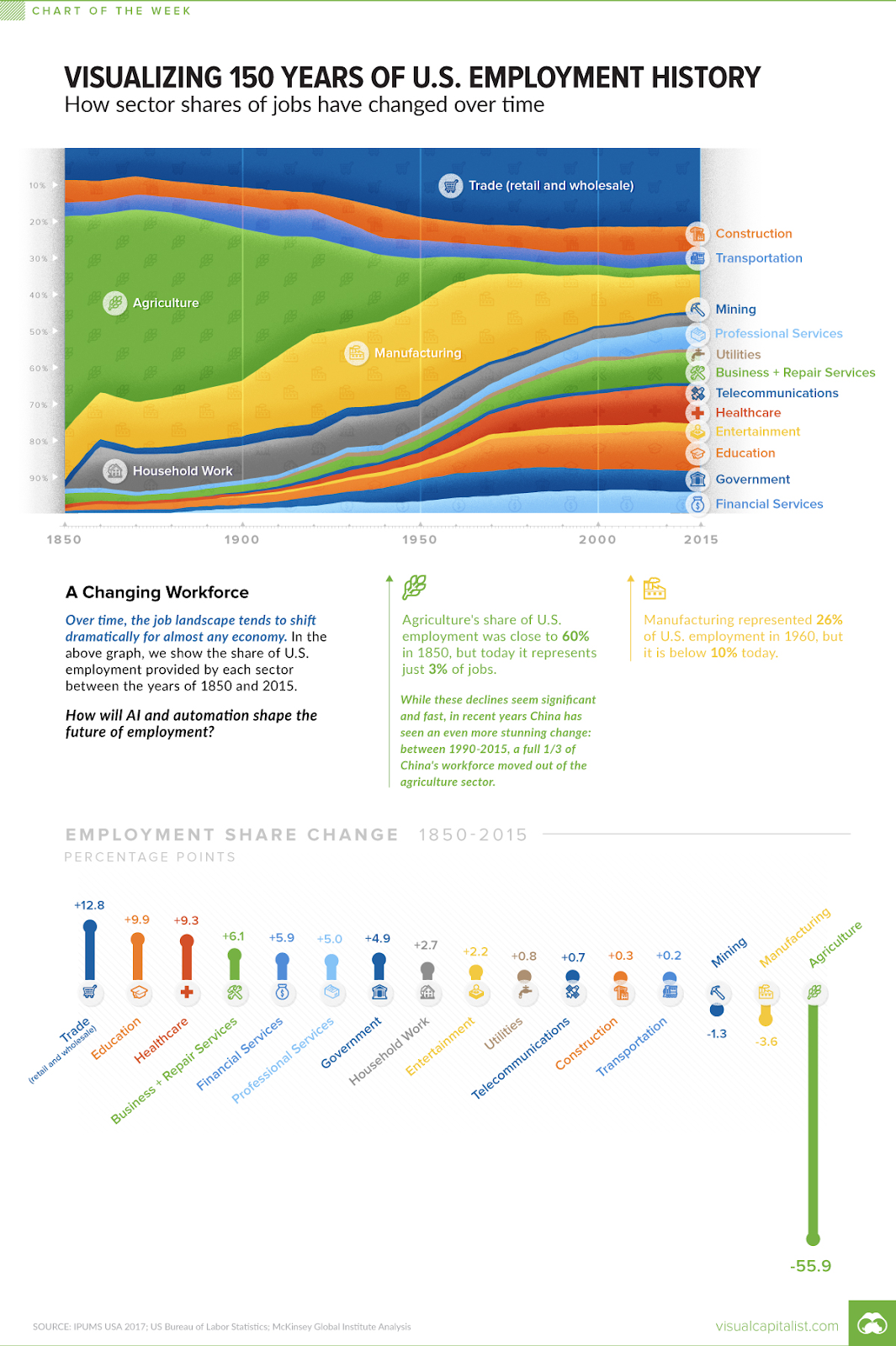Welcome to another edition of Software is Feeding the World.
The pace of change in AI has accelerated over the last 2 years. People are calling the release of DeepSeek as America’s Sputnik moment! Time will tell if this is true or not, but if I was a betting person, I would quote Amara’s law.
We tend to overestimate the effect of a technology in the short run and underestimate the effect in the long run.
The relevant question for SFTW is how Agrifood organizations should react, plan, prepare, and execute given all these changes.
What should they do tomorrow, and what should they plan for the coming years?
“Don’t Panic”
In the “Hitchhiker’s Guide to the Galaxy” by Douglas Adams, the Hitchhiker’s Guide is an actual book. The book in the novel has the words “Don’t Panic” in large letters on its cover.
The phrase is meant to be comforting advice for intergalactic travelers, especially considering the chaos and absurdity of the universe. However, in the context of the book’s events, such as the earth getting destroyed to build an intergalactic highway, the phrase though pithy and mildly reassuring, is not sufficient.

We have many people across the world (except maybe in China), who have their underwear in a bunch right now. DeepSeek and subsequent models have leapfrogged existing models in quality and price. You can now run the entire DeepSeek LLM on hardware which costs less than $ 10,000!

So how should agrifood organizations react to all these dramatic and rapid changes?
The AI Venn Diagram
Before we answer the question of how organizations should respond, who are not building foundation model LLMs.
Companies like OpenAI, Google, Microsoft, DeepSeek, Meta, and others are investing massive amounts in building foundational technologies which can be used by other companies to build applications. They have ingested billions of data points to train their models.
The foundational models are the infrastructure of generative AI, and they are horizontal in nature. Horizontal means they apply across a broad swath of domains, but might not have the necessary depth in a particular domain.
So they are a mile wide, though they are more than an inch deep, but they are definitely not a mile deep (yet).
This is where players who operate in a given industry or sector come in. Industry specific AI capabilities and models don’t need to be a mile wide, but they need to be a mile deep in their industry.
So the first thing Agrifood organizations should do is “Don’t Panic.”
But just like the Hitchhiker’s Guide to the Galaxy, the phrase is pithy, but not very useful to take meaningful steps.
AI capabilities sit at the intersection of technology (think models like DeepSeek, vision models, software engineering capabilities like authentication, workflow management etc.) data, and people.
Agrifood companies need to act along those three dimensions to take advantage of the immense power of new technologies like AI.

AI is at the intersection of Technology, Data, and People (Image generated using ChatGPT)
Sector specific companies, for example agrifood businesses need to beef up their technology, data, and people capabilities to be able to harness the power of AI in solving different problems by improving efficiencies, discovering new insights, or solving problems in completely different ways.
Technology
Last year when I did the AI for Agrifood leaders session with Venky Ramachandran, I had talked about the AI Tech Value Stack framework from Michael Parekh (shown below). Right now, most of the value in the AI world is going to the bottom of the stack to companies like NVidia, Google, Microsoft, OpenAI etc. They are building out the infrastructure to do AI at scale and occupy the bottom three to four layers.
Just as it happened in the cloud, even though AWS, Azure, and GCP are multi-billion dollar businesses, the combined value of businesses built on top of the cloud infrastructure far exceeds the value of the AWS, Azure, and GCP business.
The same thing will happen with AI over time. As more and more applications are built on top of the AI infrastructure stack, the value created by these applications will far exceed the value of the underlying infrastructure.
But this will take time, as you can see the applications are in the top right of the chart.

AI value stack by Michael Parekh.
Agrifood organizations should engage with the underlying infrastructure technologies. They should think about how they can improve their existing workflows, and reimagine new workflows, user experiences, and business models.
- Can they use AI to provide better and faster customer service and support to their customers at a lower cost?
- Can they personalize user experiences through the use of AI?
- Can they enable new user experiences due to the availability of sophisticated natural language interfaces?
- Can they use AI to develop products and services more efficiently and quickly?
- Can they leverage AI to take products to market more efficiently and quickly?
- How can they invest in technology to manage the security, privacy, and trust of their customers, employees, and stakeholders?
- How can they invest in tools and technologies to reduce any bias or harmful effects of working with AI? (For example, hallucinations)
There is an opportunity for agrifood businesses to build vertical AI enabled applications based on the access to unique and interesting data sets.
Data
Industry, domain, and use case specific data will continue to be important for building and integrating strong AI capabilities into the entire business process. This is a tricky one for agribusiness to respond to. For the last 20 years, AgTech has been beating the drum that there are rainbows and cupcakes at the end of the data highway. The promise has not played out to the degree it was talked about.
The availability of Gen AI and natural language tools has made accessing data in different formats a bit easier
- Continue to invest in the collection of interesting data sets, ideally which are unique to you.
- Invest in tools and techniques to improve the quality and usefulness of data based on the use case.
- Think about creation of brand new data sets which will be relevant to your problem area and how you can collect, store, manage and use it in AI models most effectively.
- Think about how data will be used by AI models at the time of data creation, data capture, and data storage. For example, instead of storing images in PDFs, which are a bit harder for GenAI based tools to understand, think about how you would store the data which is easier for an LLM to read and synthesize.
- Think about how you can make unstructured and uncaptured data visible to AI tools. For example, voice notes, side bar discussions, meeting notes, etc. are not easily available today to draw insights from.
- Focus on tools and techniques which makes it easy to access data across different systems spread throughout your organization. (While respecting data privacy, access, and authorization rules). AI agents will be the new APIs and microservices between different systems.
People
Powerful technologies do have an impact on the types of jobs people do. If you look at the history of the US, agriculture’s share of US employment went from 60% in 1850 to just 3% in 2015. The drop was even more dramatic in China where between 1990 and 2015, a third of China’s workforce moved out of the agriculture sector.
Most of the changes in agriculture have been due to automation and consolidation at the farm level, which is quite evident in the growth of average farm size in the US. If you look at farms above 500 acres in the US, there are only 100,000 farmers / farm operators who account for a majority of the crop cultivation in the US (at least in commodity row crop space).

Source: The Visual Capitalist
So newer technologies like AI, and automation will not make a significant impact in the total number of people employed in commodity row crops, though it might make a significant difference in specialty crops as many of the operations are still done by humans.
My personal opinion is that the US employment in agriculture (whichever way it is defined in the future), will asymptote to 1% of the total labor force.
Having said that, the nature of jobs will change. Farmers might be doing more data analysis, and monitoring of operations, rather than driving their tractor or combine.
Agribusiness also needs to respond by differently skilling their employee base. As the cost of deploying AI powered capabilities continues to go down, the differentiation for agribusiness might come down to having access to better data, and having a better skilled staff, who can network with their customer base, establish meaningful and trust worthy relationships with farmers, and other individuals within the ecosystem. Here are some concrete steps to take.
- Encourage the use of consumer grade AI tools for employees (while respecting customer and company data privacy)
- Provide upskilling opportunities for employees on various AI technologies on a continuing basis. There are tons of free and paid classes available online or in person which are available for business, commercial, and technical team members.
- Provide upskilling opportunities for employees (or get them through partnerships) on software technologies and architecture.
- Work on developing and promoting soft skills like building networks, curiosity, and human connection. These skills will become even more important in an AI enabled future for agribusinesses.
- Evaluate every project, problem, and use case to see if AI could be applied to solve the problem in more efficient and unique ways.
- Before hiring any new person, evaluate the requirements of the job to see what percentage of it could be done by AI.
There is an excessive amount of attention given to technology, and data, but do not underestimate the importance of human expertise and domain knowledge to deploy AI enabled solutions in the future.
At the end of the day, AI is an enabler for most agribusiness (unless you are a pure technology company working in AgTech). You are in the business of seed or chemicals, or building equipment, or providing a crop protection service, or providing a service to pick fruit and ship it to the right place. In all of these cases, AI and other technology components are an enabler and not the main business.
“Don’t Panic” as “Software is Feeding the World”!
It is time to build!


